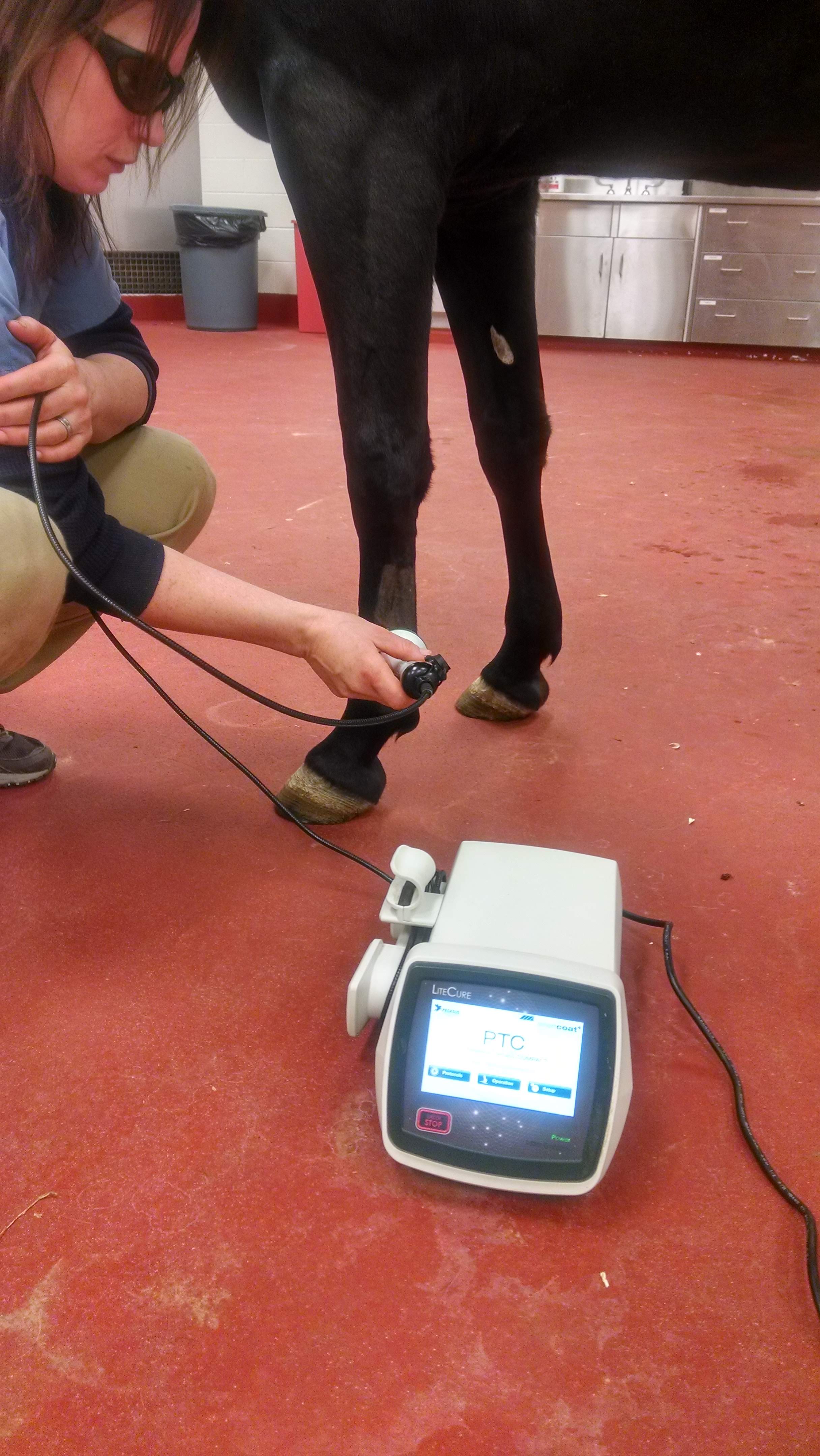Equine Therapy Success Stories: Actual People, Genuine Psychological Improvements
Equine Therapy Success Stories: Actual People, Genuine Psychological Improvements
Blog Article
Laser Treatment in Equine Treatment: A Modern Approach to Improving Horse Health And Wellness
Laser treatment has actually become a pivotal technique in equine treatment, using focused light power to cultivate mobile fixing and expedite recuperation from a selection of ailments. This non-invasive approach is particularly reliable in handling musculoskeletal injuries, injuries, and inflammatory problems, significantly boosting overall equine wellness. By promoting mitochondrial activity and boosting ATP production, laser treatment not only enhances blood circulation however additionally provides substantial discomfort relief. As this innovative treatment continues to acquire traction, it opens appealing possibilities for attending to chronic problems like joint inflammation and hoof problems, indicating a transformative shift in vet treatment. What makes this technique specifically compelling?
Comprehending Laser Treatment
Laser treatment, a non-invasive therapy technique, has actually gained substantial grip in equine medication due to its efficiency in promoting healing and pain relief. Enhanced ATP degrees expedite tissue fixing processes and reduce swelling, making laser treatment specifically effective for treating musculoskeletal injuries, injuries, and other inflammatory conditions in horses.
There are several sorts of lasers utilized in equine treatment, each with specific wavelengths and power results customized to various healing requirements. Low-level laser treatment (LLLT), additionally understood as cold laser therapy, utilizes reduced power levels to stimulate cell function without causing thermal damage. High-intensity laser therapy (HILT), in contrast, uses higher power degrees to achieve deeper cells penetration and more considerable restorative impacts.
Veterinarians use numerous laser gadgets and strategies relying on the problem being treated and the desired depth of tissue penetration. Proper training and proficiency are vital for making sure the secure and effective application of laser therapy, consequently maximizing its healing capacity while minimizing dangers.
Benefits for Horse Health
With a strong understanding of how laser therapy works, it is vital to explore its various advantages for equine health and wellness. By promoting cellular feature, laser treatment advertises faster injury recovery and help in the regrowth of broken cells.
Additionally, laser treatment has been shown to improve flow, therefore boosting blood flow to influenced areas. Boosted blood circulation ensures that necessary nutrients and oxygen are provided more successfully, facilitating the healing process. Additionally, laser therapy's anti-inflammatory results aid in decreasing swelling and pain, which is critical for the total well-being of the steed.
Discomfort management is an additional considerable advantage. By launching endorphins and obstructing discomfort signals, laser therapy provides reliable, non-invasive alleviation from both intense and persistent discomfort. This can add to boosted mobility and lifestyle for the pet.
Finally, laser therapy is a non-invasive treatment alternative, reducing the risk of complications associated with more intrusive procedures. Its flexibility and effectiveness make it an invaluable informative post tool in contemporary horse vet medication.
Typical Problems Dealt With

Another widespread condition treated with laser treatment is see this website arthritis. Horses dealing with both intense and persistent joint inflammation advantage from the anti-inflammatory results of laser treatment, which aids to minimize discomfort and boost joint feature. Furthermore, laser treatment is used in the administration of injuries. Whether dealing with medical lacerations or terrible injuries, the modality promotes quicker cells repair and decreases the risk of infection.
Equine breathing problems, such as reoccurring respiratory tract blockage (RAO), also react favorably to laser treatment. Laser therapy is advantageous in treating unguis issues, including laminitis and abscesses.
Treatment and Safety
Applying laser therapy in equine treatment involves a meticulous treatment to guarantee both efficacy and safety and security. Equine Therapy. The process begins with a detailed vet evaluation to establish the viability of laser therapy for the horse's certain problem. Once regarded ideal, the treatment area is prepared by cleansing and, if needed, clipping the hair to enhance laser infiltration
The professional has to choose the proper kind of laser, normally a low-level laser (LLLT) or a high-power laser (HPL), relying on the problem being dealt with. The laser gadget is after that calibrated to the ideal wavelength, power, and period settings. Throughout the application, the specialist relocates the laser over the targeted location in an organized fashion, ensuring consistent and also exposure.
Security protocols are strictly complied with, consisting of the usage of safety eyeglasses for both the professional and the horse. Furthermore, it is crucial to check the horse check these guys out for any type of indications of discomfort or unfavorable reactions throughout the treatment. Post-treatment, the equine is frequently provided a duration of rest to allow the therapeutic impacts to manifest.

Future of Equine Laser Treatment
As advancements in vet medicine proceed to unfold, the future of equine laser treatment holds considerable pledge. Emerging innovations and much deeper clinical understandings are readied to improve and expand the applications of laser treatment for steeds. Among one of the most expected developments is the assimilation of advanced imaging methods that enable a lot more exact targeting of damaged tissues, therefore boosting healing results. In addition, the development of portable and straightforward laser devices is likely to make this therapy extra easily accessible to a wider series of specialists and horse proprietors.
Moreover, continuous research into the molecular and cellular devices of laser therapy will likely generate enhanced methods tailored to particular problems, enhancing effectiveness and minimizing treatment times. Customized treatment strategies based on hereditary and biochemical pens could come true, ensuring that each horse receives the most appropriate and efficient care.
Additionally, regulative innovations and standardization of protocols will improve the reliability and dependability of laser therapy in equine practice. Equine Therapy. As these advancements remain to arise, equine laser therapy is poised to become an important element of veterinary care, offering improved healing and enhanced lifestyle for horses worldwide
Conclusion
Report this page